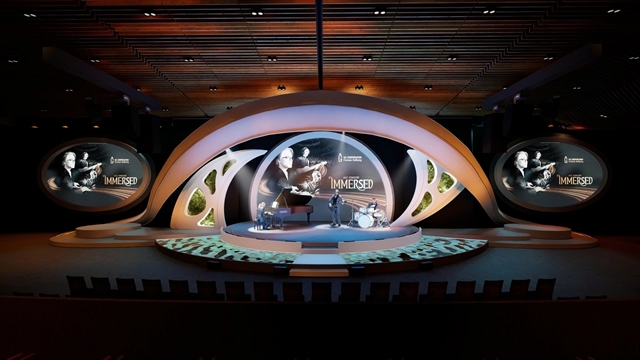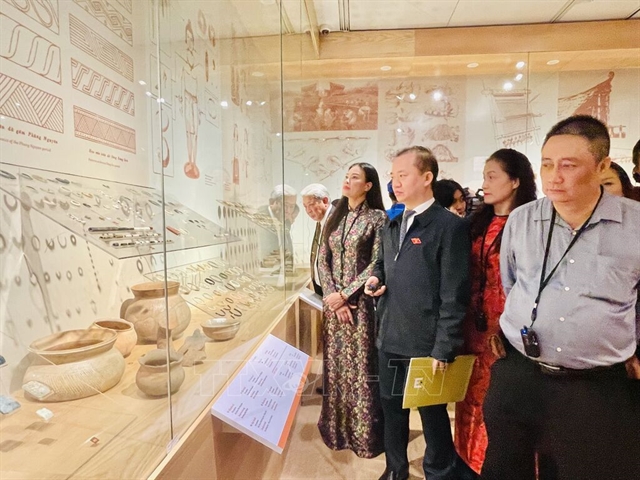 Life & Style
Life & Style

 |
| Visitors look at artefacts excavated from Vườn Chuối archaeology site at Hà Nội Museum. VNA/VNS Photo Tuyết Mai |
HÀ NỘI — An exhibition at the Hà Nội Museum is showcasing nearly 1,000 documents and artefacts from the Bronze Age in northern Việt Nam.
Making use of 3D projection technology and 3D mapping, the display recreates the lifestyle of the ancient residents of the capital city's 4,000-year-old Vườn Chuối Village.
"Vườn Chuối is a typical ancient village of wet-rice farmers," said Dr Nguyễn Ngọc Quý of the Archaeology Institute. "They are the first settlers in the Red River Delta to lay the groundwork for the formation of an early Vietnamese state."
The 750sq.m space has five exhibition areas highlighting the journey of discovery, cultural convergence and crystallisation, preserving and promoting Vườn Chuối’s heritage, scientists at Vườn Chuối and an interactive corner for aspiring archaeologists.
Artefacts on display include a green jade axe symbolising the power of a leader, burial offerings from a tomb dating back 3,500 years to the pre-Đông Sơn period, and a collection of jade jewellery.
The exhibition is being held alongside the official release of this year's scientific research findings from the Vườn Chuối archaeological site. It is part of the Thăng Long - Hà Nội Festival 2025, which runs through November 16.
First discovered by archaeologists in 1969, the Vườn Chuối site in Hà Nội's Hoài Đức Commune reflects nearly 4,000 years of the history and development of an ancient Vietnamese village. The site spans the Phùng Nguyên, Đồng Đậu, Gò Mun, Đông Sơn and post-Đông Sơn cultural periods.
Over the course of 50 years, 11 excavations have unearthed secrets from the past and revealed sketches of the lives of a Hà Nội community from 3,500 years ago.
The largest excavation, conducted from March 2024 to March 2025 on the western side of the site, revealed living quarters, craft workshops, burial grounds and many unique artefacts belonging to the pre-Đông Sơn and Đông Sơn eras.
Since April, the Hà Nội Museum has been working with the Institute of Archaeology and the University of Social Sciences and Humanities to categorise and analyse the recovered artefacts.
"New excavation results continue to supplement historical sources confirming the important historical and cultural value of the Vườn Chuối site in northern Việt Nam's Bronze Age," said museum director Nguyễn Tiến Đà.
At the exhibition opening, the Vườn Chuối site was awarded a certificate cementing its status as a Hà Nội relic site, along with the launch of a publication titled 'Discovering Vườn Chuối (Hanoi) through the excavation season of 2024-2025'.
The exhibition runs until November 16 on Phạm Hùng Road in the capital's Từ Liêm Ward. — VNS